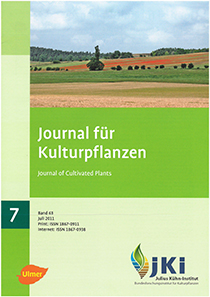Post Market Monitoring: Legal Framework in Brazil and First Results(Contribution to the 4<sup>th</sup> International Workshop on PMEM of Genetically Modified Plants, Quedlinburg)
DOI:
https://doi.org/10.5073/JfK.2011.07.04Keywords:
Genetically modified organism (GMO), transgenic crops, post market monitoring, Brazil, CTNBio, regulations on GMOAbstract
Brazil is presently (2010) the second largest producer of genetically modified (GM) crops. The legal framework to support both research activities and the commercial release of Genetically Modified Organisms (GMOs) is, however, very recent, as the Biosafety Law dates back from 2005. After the indispensable risk analysis, done by National Technical Commission for Biosafety (CTNBio), a GM plant can be approved for commercial release. Nevertheless, as stated in the Normative Resolution Nr. 5 (NR-5), of 2008, the post-market monitoring is mandatory. However, the first GM crop in Brazil, the herbicide tolerant soybean, was harvested in 2005. The CTNBio then asked for a monitoring plan and the applicant designed a complex study focused on case-specific monitoring. After four years the detailed field studies proved that no harm derived from this crop. The costs, nevertheless, were enormous. In June 2010, 21 GM plants were already approved for commercial release in Brazil, corresponding to different events in soybean (6), cotton (8) and maize (9). Single and stacked events tolerant to herbicides or insect-resistant are presently been planted. If, for each single event and for the stacks, a laborious post market monitoring plan were to be executed, the total costs would be unbearably high. The applicant is legally and financially responsible for the monitoring in Brazil. It is also responsible to produce an adequate monitoring plan. Since the NR-5 rules are far from being clear, the applicants either proposed an elaborated plan for case-specific monitoring or, conversely, submitted a very simple plan, targeting some potential adverse effect that can be more easily evaluated in commercial fields. It is not clearly stated either in the Biosafety Law or in the NR-5 that monitoring should be split in case-specific monitoring and general surveillance, as adopted in Europe. If case-specific monitoring plans are difficult to design, a sensible suggestion for the general surveillance was not yet achieved. Nevertheless, the info-concentrating Brazilian Biosafety Information System may be a valuable source for the general surveillance, once it starts to operate. The general surveillance is presently either not contemplated in the monitoring plans or only minimally treated. It is important to keep in mind that the applicants are responsible to produce most of the data, even for the general surveillance, and this can be extremely difficult in a scenario where many different events are cultivated, frequently in neighbouring fields. A conceptual framework for post market monitoring must therefore be established following a dialog with all stakeholders. CTNBio is aware of these challenges and has already started to adjust the NR-5 to better guide the applicants in their writing of monitoring plans.
Published
Issue
Section
License
The content of the journal is licensed under the Creative Commons Attribution 4.0 License. Any user is free to share and adapt (remix, transform, build upon) the content as long as the original publication is attributed (authors, title, year, journal, issue, pages).
The copyright of the published work remains with the authors. The authors grant the Journal of Cultivated Plants, the Julius Kühn-Institut and the OpenAgrar repository the non-exclusive right to distribute and exploit the work.







